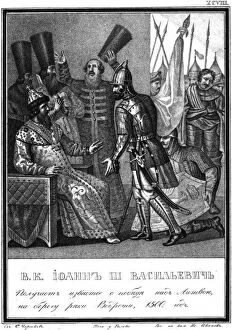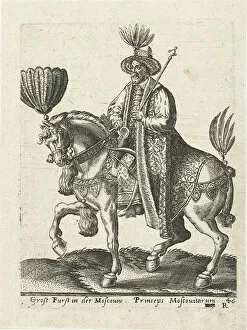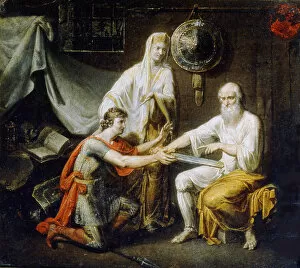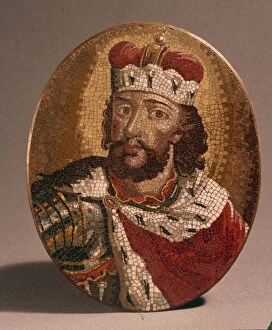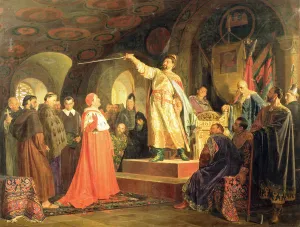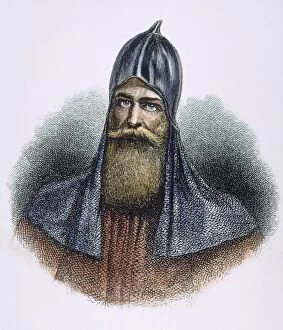Rurik Dynasty Collection (page 5)
The Rurik Dynasty, a prominent ruling family in medieval Russia, left an indelible mark on the country's history
All Professionally Made to Order for Quick Shipping
The Rurik Dynasty, a prominent ruling family in medieval Russia, left an indelible mark on the country's history. From their rise to power to their enduring legacy, these captivating images shed light on the dynasty's significant moments. A magnificent statue of Anne of Kiev stands tall at the Royal Abbey of St. Vincent in Senlis, symbolizing her influential role as Queen Consort of France and regent during her husband's absence. Vladimir the Great's campaign to Chersonesos is depicted in a striking painting from 1904, showcasing his military prowess and expansionist ambitions that shaped early Russian history. Saint Olga, Princess of Kiev, revered for her conversion to Christianity and subsequent efforts to spread the faith throughout Rus', is immortalized by Nikolai Alexandrovich Bruni's artwork from the second half of the 19th century. The marriage between Ivan III and Sophia Palaiologina in 1472 marked a pivotal moment when Byzantine influence merged with Russian traditions. Boris Artemyevich Chorikov captures this union beautifully in his masterpiece from 1836. Mikhail Vasilyevich Nesterov portrays Saint Olga once again in his stunning artwork dating back to 1885-1896. The ethereal depiction showcases her spiritual strength and unwavering devotion. The fall of Novgorod serves as a reminder of political upheaval within Rus'. This event altered power dynamics significantly and forever changed regional politics. Prince Alexander Nevsky's plea for mercy from Batu Khan demonstrates both diplomacy skills and loyalty towards protecting Russia during tumultuous times. An anonymous artist skillfully captures this poignant moment at the end of the 19th century. Johann Jakob Wicks' collection reveals shocking atrocities committed by Russians during Livonia conflicts in both July/August 1577 and specifically in 1578. These events highlight darker aspects amidst historical triumphs.

